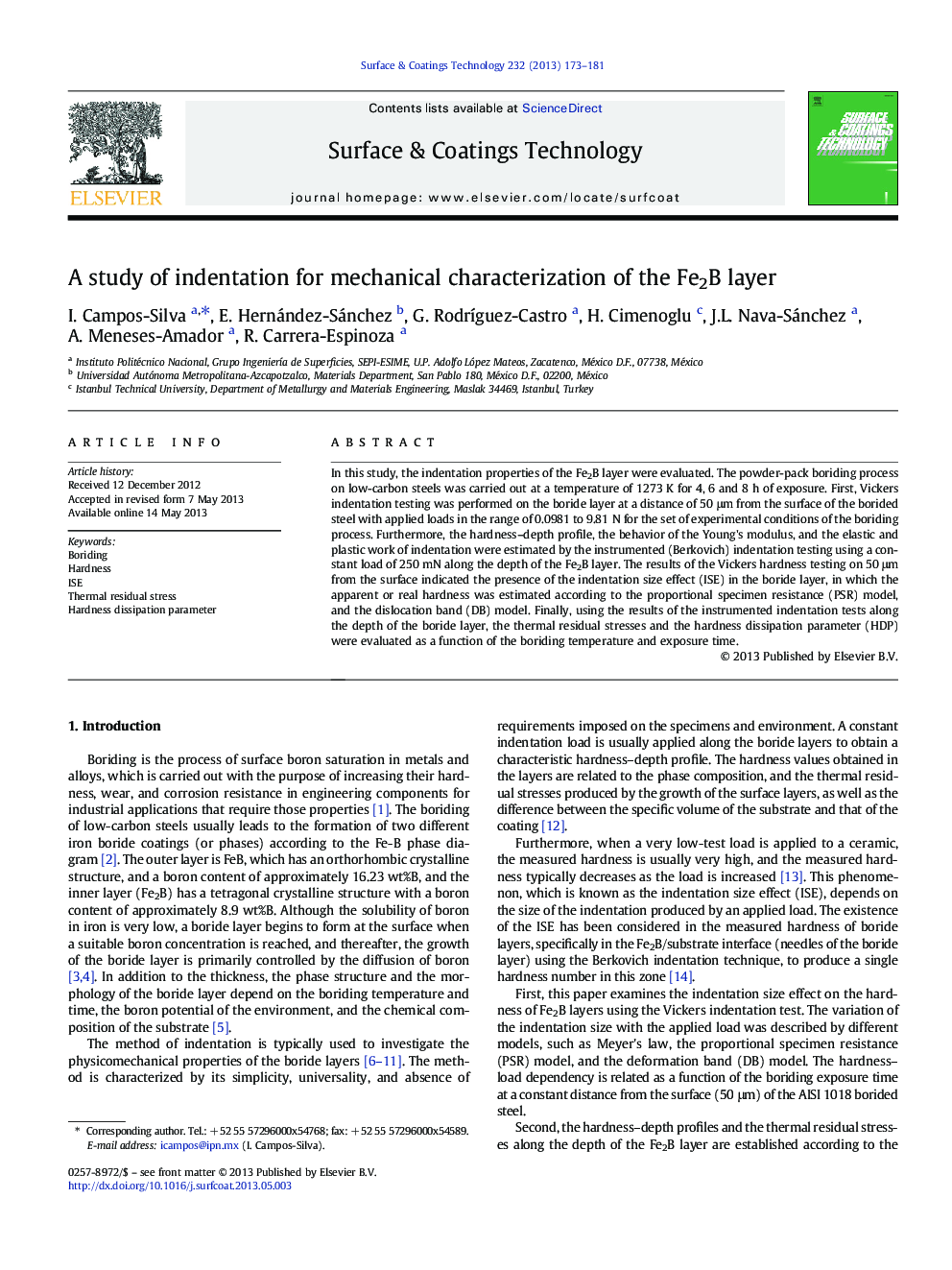| Article ID | Journal | Published Year | Pages | File Type |
|---|---|---|---|---|
| 8029442 | Surface and Coatings Technology | 2013 | 9 Pages |
Abstract
In this study, the indentation properties of the Fe2B layer were evaluated. The powder-pack boriding process on low-carbon steels was carried out at a temperature of 1273 K for 4, 6 and 8 h of exposure. First, Vickers indentation testing was performed on the boride layer at a distance of 50 μm from the surface of the borided steel with applied loads in the range of 0.0981 to 9.81 N for the set of experimental conditions of the boriding process. Furthermore, the hardness-depth profile, the behavior of the Young's modulus, and the elastic and plastic work of indentation were estimated by the instrumented (Berkovich) indentation testing using a constant load of 250 mN along the depth of the Fe2B layer. The results of the Vickers hardness testing on 50 μm from the surface indicated the presence of the indentation size effect (ISE) in the boride layer, in which the apparent or real hardness was estimated according to the proportional specimen resistance (PSR) model, and the dislocation band (DB) model. Finally, using the results of the instrumented indentation tests along the depth of the boride layer, the thermal residual stresses and the hardness dissipation parameter (HDP) were evaluated as a function of the boriding temperature and exposure time.
Related Topics
Physical Sciences and Engineering
Materials Science
Nanotechnology
Authors
I. Campos-Silva, E. Hernández-Sánchez, G. RodrÃguez-Castro, H. Cimenoglu, J.L. Nava-Sánchez, A. Meneses-Amador, R. Carrera-Espinoza,
